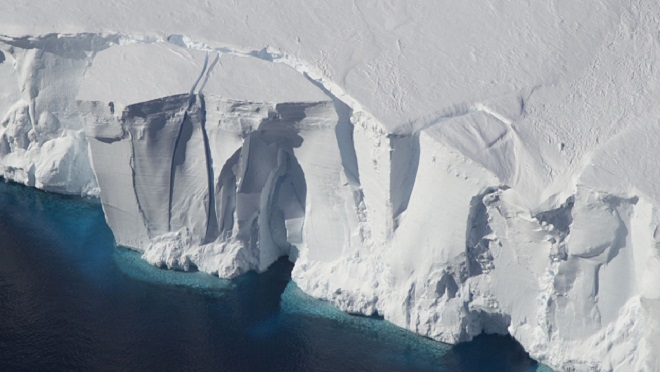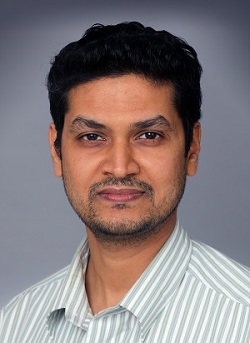
Improved models of iceberg calving will reduce uncertainty in sea level rise projections
An assistant professor of civil and environmental engineering has been awarded a $555,000 NSF CAREER grant to analyze Antarctic ice sheet fracture, improve models for ice mass loss and reduce uncertainty in long-term projections of average sea level rise.
“There is concern that rapid changes to floating ice shelves can destabilize parts of the Antarctic ice sheet and accelerate its contribution to global sea level rise,” said Ravindra Duddu.
By 2100 average sea level is estimated to rise by one to three feet, possibly up to six feet, and likely will accelerate in the following century. Such a large range vastly complicates planning for sea level increases and understanding of the socioeconomic risks.

The most significant contributor to this uncertainty is the behavior of Antarctic sheets – when, how and why icebergs fracture and detach, or calve. It is a complex problem, to which Duddu translates and applies models and methods developed in civil and mechanical engineering disciplines, namely, computational fracture mechanics and nonlinear solid and fluid mechanics. Advanced analysis of ice sheet fracture will improve our understanding of the interaction between ice sheet and ocean processes.
The goal, Duddu said, is not to predict when a specific glacier or ice shelf will break off, but to develop fracture-physics-based calving laws to represent mass loss from the Antarctic ice sheet over longer time scales of decades to centuries. By representing iceberg calving in ice sheet models that are integrated with ocean and climate models, this effort aims to improve estimates of average sea level rise and reduce the uncertainty.
The multi-scale and multi-physics nature of the calving process make the research goal challenging. Ice shelves have varied thickness, curvature, density, salinity and strength – among many physical factors. Floating ice sheets interact with the atmosphere, the ocean and land ice. The motion or flow of land ice is affected by frictional slip at the surface of the bedrock below it. Additionally, hydro-fracture due the surface melt water during warmer periods can enhance calving, but the process is poorly understood.
“Owing to its complexity and the challenges or rewards it presents, iceberg calving has been called the ‘holy grail’ problem in glaciology,” Duddu said, “and this project sets me up on a career-long research effort to enrich our understanding of ice sheet fracture and its relation to other earth system processes.”
The project, funded by NSF’s Office of Polar Programs, will be done in collaboration with research scientists in the Climate and Global Dynamics Laboratory at the National Center for Atmospheric Research and at the University of Colorado, Boulder.
The prestigious award also involves a significant educational component. Outreach will involve Metro Nashville Public Schools and new cyber-learning tools to engage students in computational science, engineering and glaciology. The goal is to engage student populations that are otherwise under-represented in technology-rich experiences.
Additionally, the project will include the development of educational modules for Earth and Environmental Science students at Vanderbilt and a computational modeling workshop in collaboration with Oak Ridge National Laboratory to bridge the gaps between civil engineering and earth science students. Summer research opportunities for undergraduates and high school students also are planned.
“Engineering students are often unaware of mechanics challenges in geosciences, and earth sciences students are often deficient in computational modeling skills,” Duddu said. “It is a challenge to bring the geosciences and civil engineering communities together, but there is tremendous potential for discovery and innovation.”